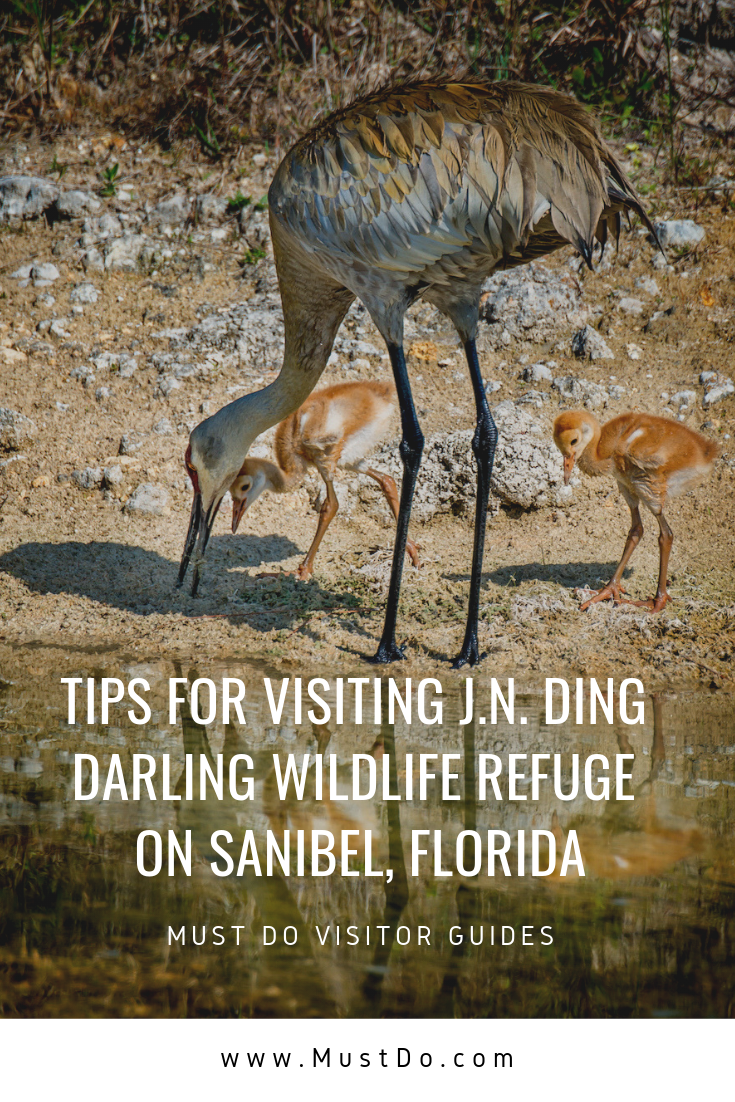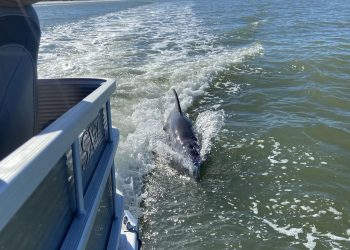Sanibel Island is a barrier island near Fort Myers, Florida with access via a causeway charging a $6 toll for vehicles (2020 prices). Over two-thirds of this tranquil vacation destination is designated as a wildlife habitat with a large area lying within the J.N. “Ding” Darling Wildlife Refuge. Visitors to Southwest Florida should definitely plan to spend a few hours–or even a full day–at the refuge where huge flocks of migratory birds rest, breed, and nest during the cooler winter months. It’s also a place to spot local Florida wildlife including shoals of jumping mullet, fiddler crabs, shrimp, and horseshoe crabs. You may even see evidence of some of the 35 species of mammals on the island including racoons, squirrels, bobcats, otters, marsh rabbits, and Sanibel Island rice rats. 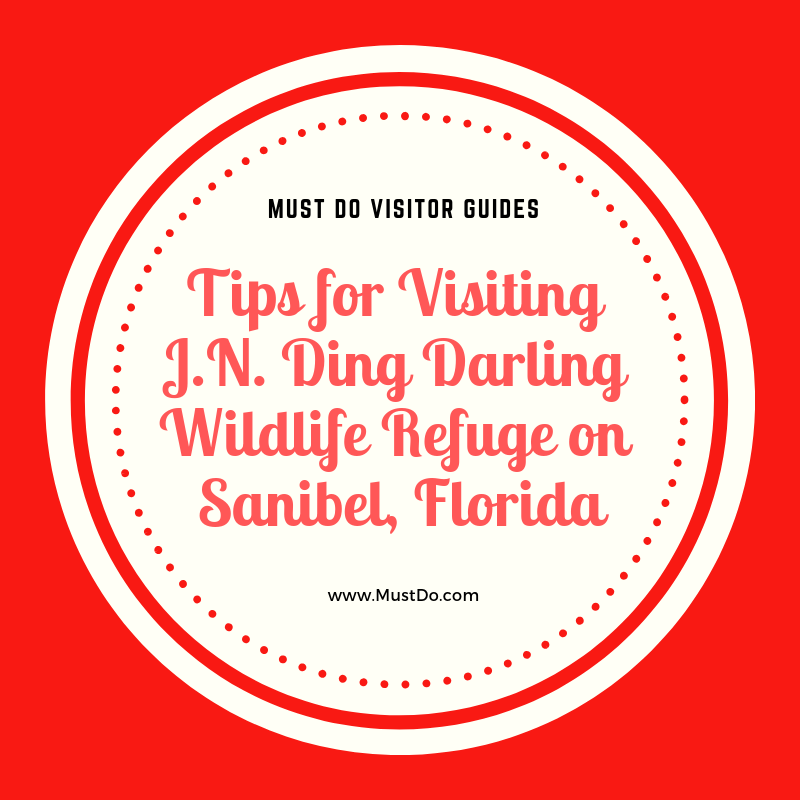
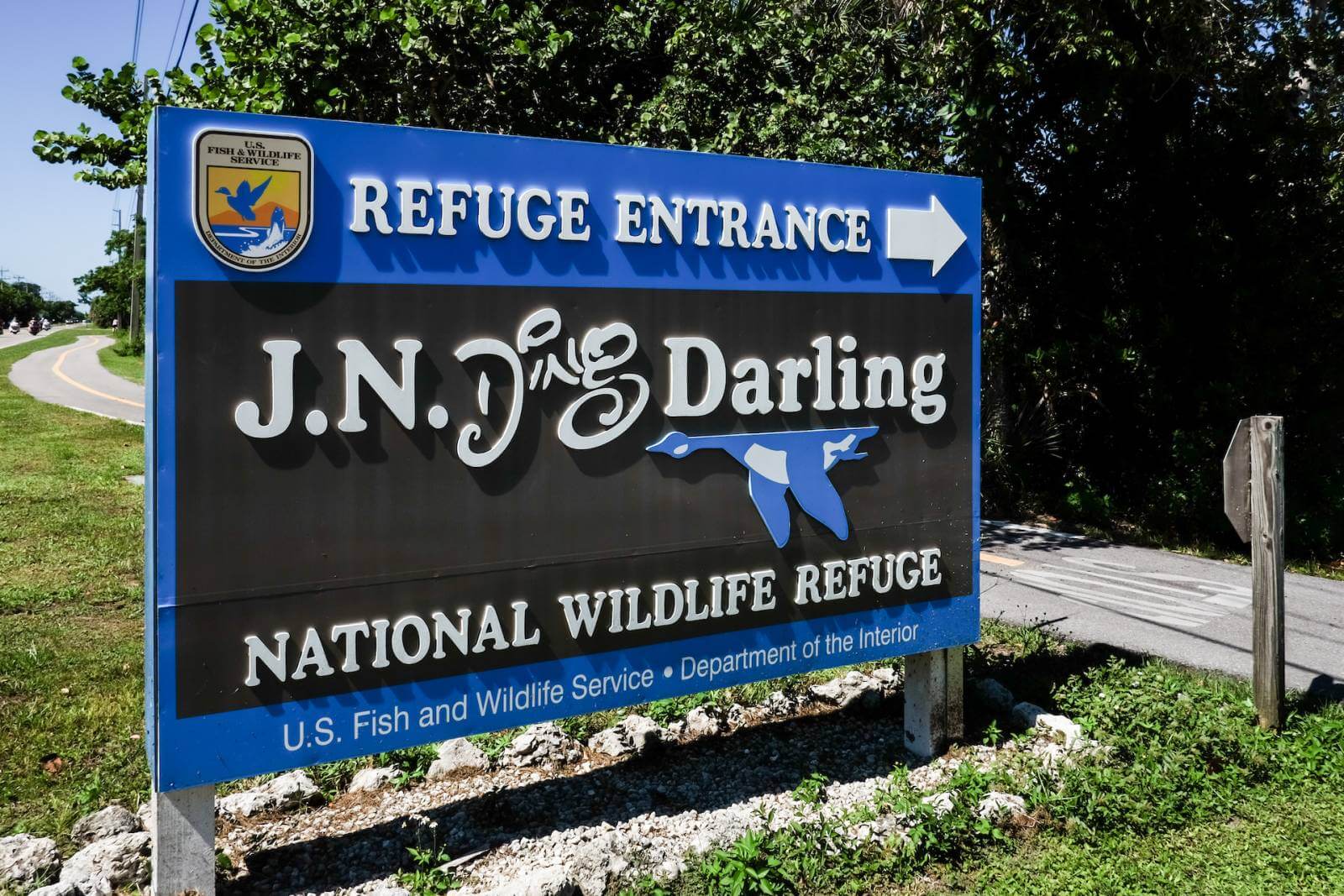
Photo credit Mary Carol Fitzgerald
Birdwatching on Sanibel Island
Bird lovers and nature photographers will be in their element at J.N. “Ding” Darling National Wildlife Refuge. It has sightings of over 245 bird species from common ospreys, egrets, many types of heron, pelicans, terns, and red-shouldered hawks to rare species. You may be lucky enough to see roseate spoonbills sifting the shallow lagoon waters with their spoon-shaped beaks, spot a bald eagle swooping low over the water for his next meal, or spotting bright cardinals, warblers, and flycatchers in the surrounding mangroves and greenery.
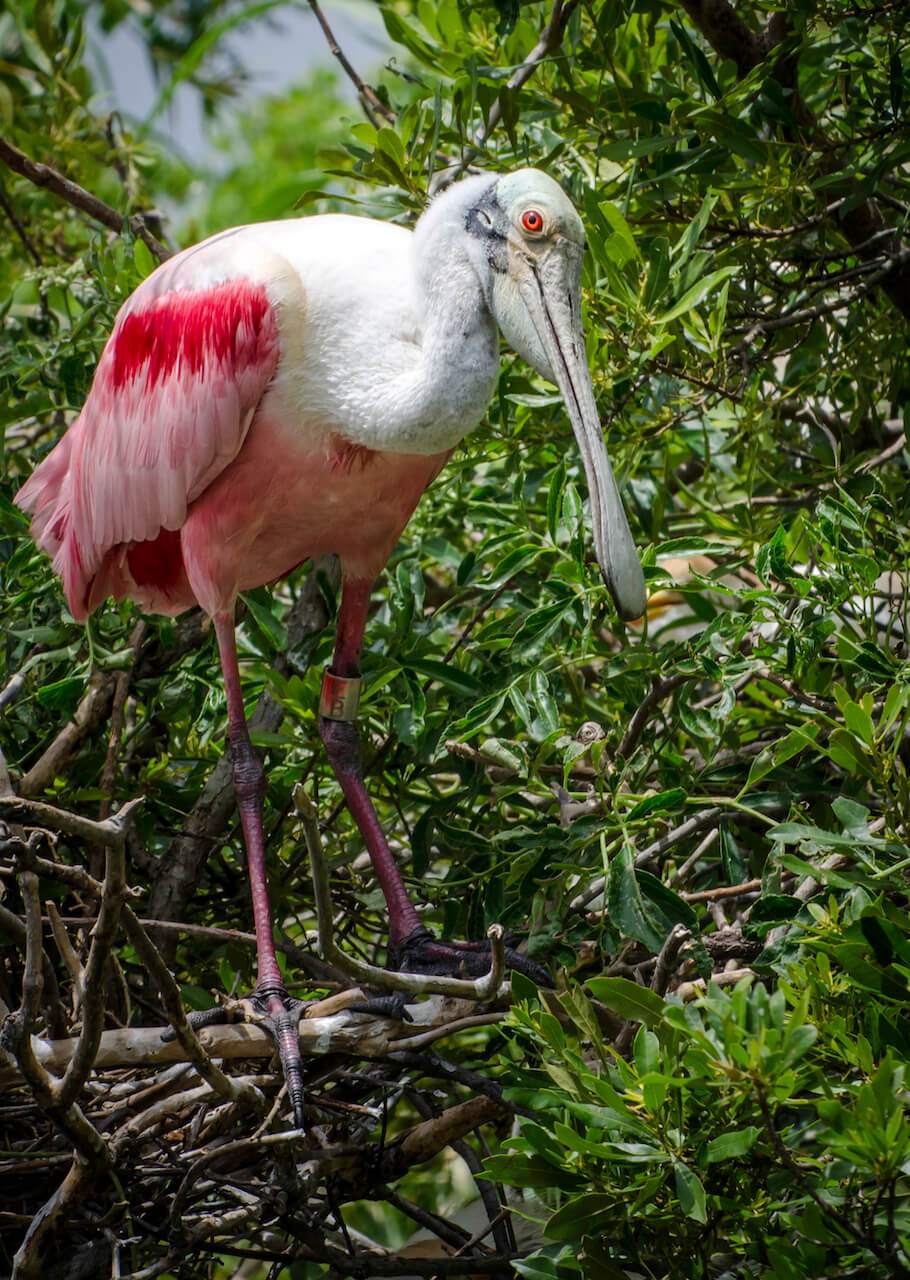
Photo credit Jennifer Brinkman
Your first stop should be at the Visitor Center to pick up their free Bird Checklist. It not only lists all the birds, it also shows their seasonal appearance. The birds are grouped into their families and include waterfowl; loons and grebes; frigate birds and gannets; cormorants and anhingas; pelicans; shorebirds; gulls, wading birds; warblers; woodpeckers and more. It also provides information on the best area of the Refuge for birding.
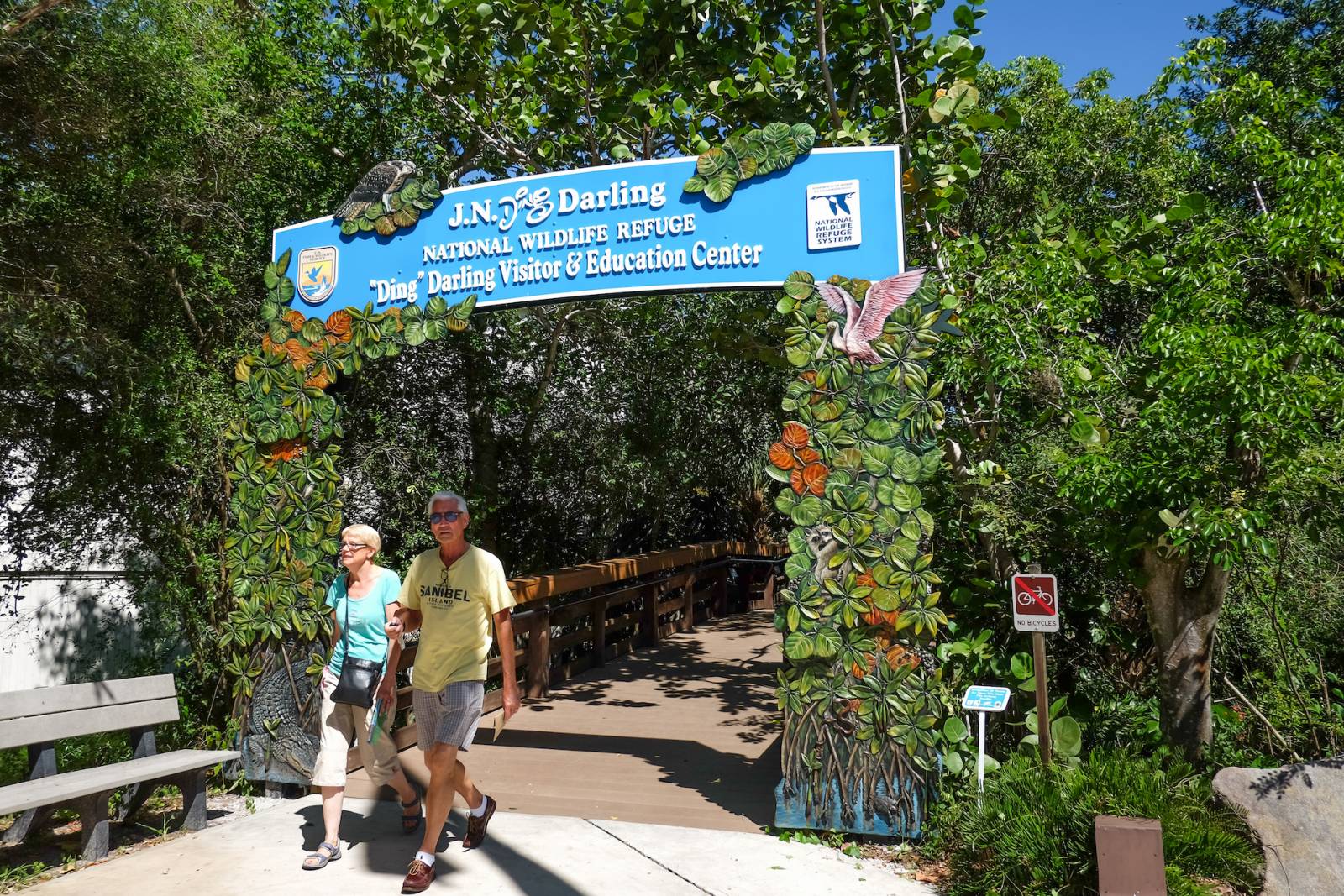
Photo credit Mary Carol Fitzgerald
The “Big 5” that most birdwatchers will want to tick off their bucket list are the American white pelican, mangrove cuckoo, reddish egret, yellow-crowned night heron, and the native roseate spoonbills, and with a little patience and luck they can all be seen on Sanibel Island.
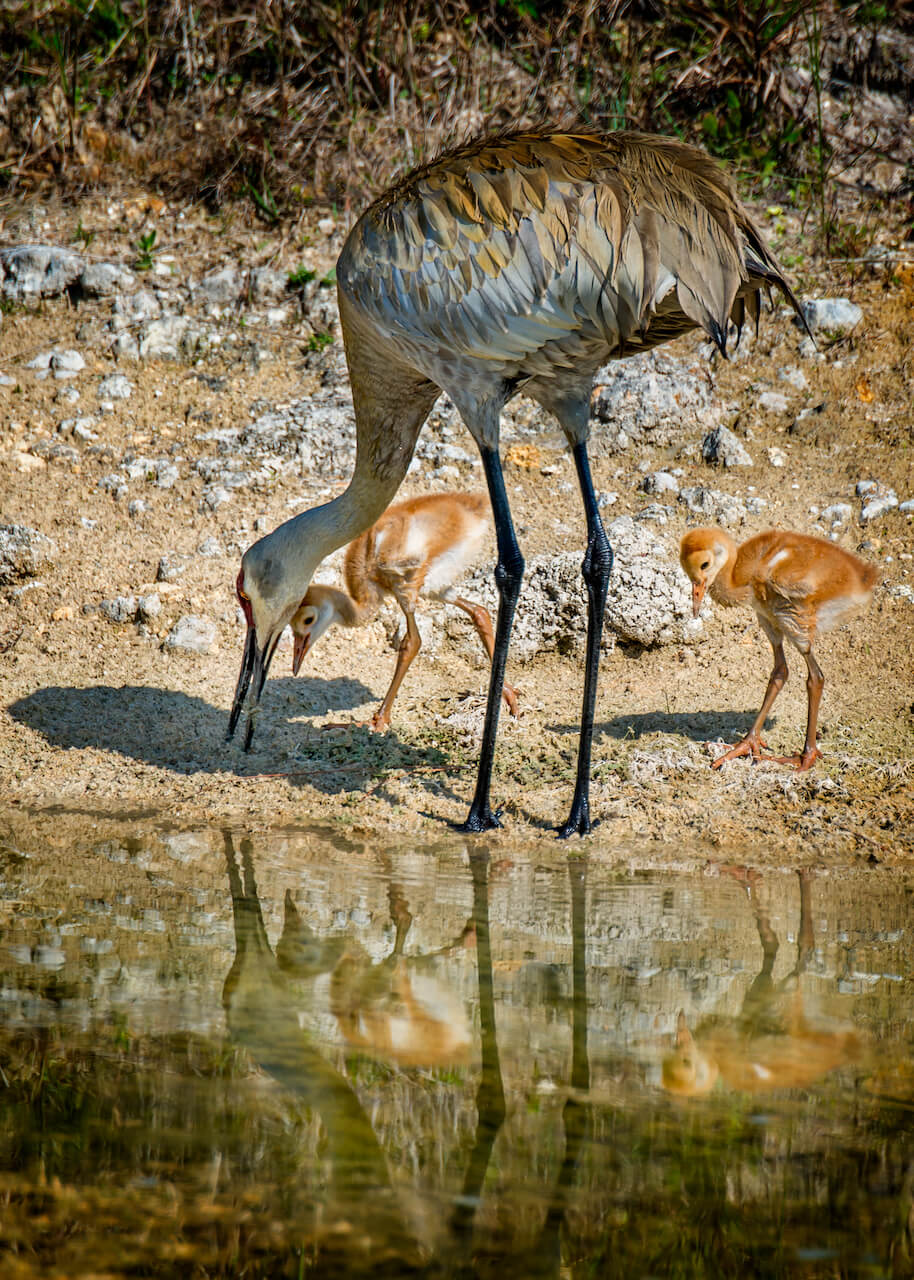
Photo credit Jennifer Brinkman
Ways to Explore J.N. “Ding” Darling National Wildlife Refuge
You can walk, cycle, or drive through the refuge along the four-mile Wildlife Road for a nominal fee–$10/vehicle, $1/pedestrian, $1 bicycle (October, 2020). There are places to pull off to watch birds and commune with nature. Alternatively, take a guided tour in an open-sided tram. A naturalist will make stops at various observation areas to point out scuttling land crabs, alligators, and nesting birds. Tours last about 1¾ hours and you can book ahead or hop aboard from the parking lot. In addition to the wildlife drive there are three major hiking trails offering a diversity of eco-systems, fantastic views, and an abundance of wildlife. Visitors and water lovers will enjoy exploring the shallow bay waters on a guided kayak, canoe, or stand-up paddleboard excursion.
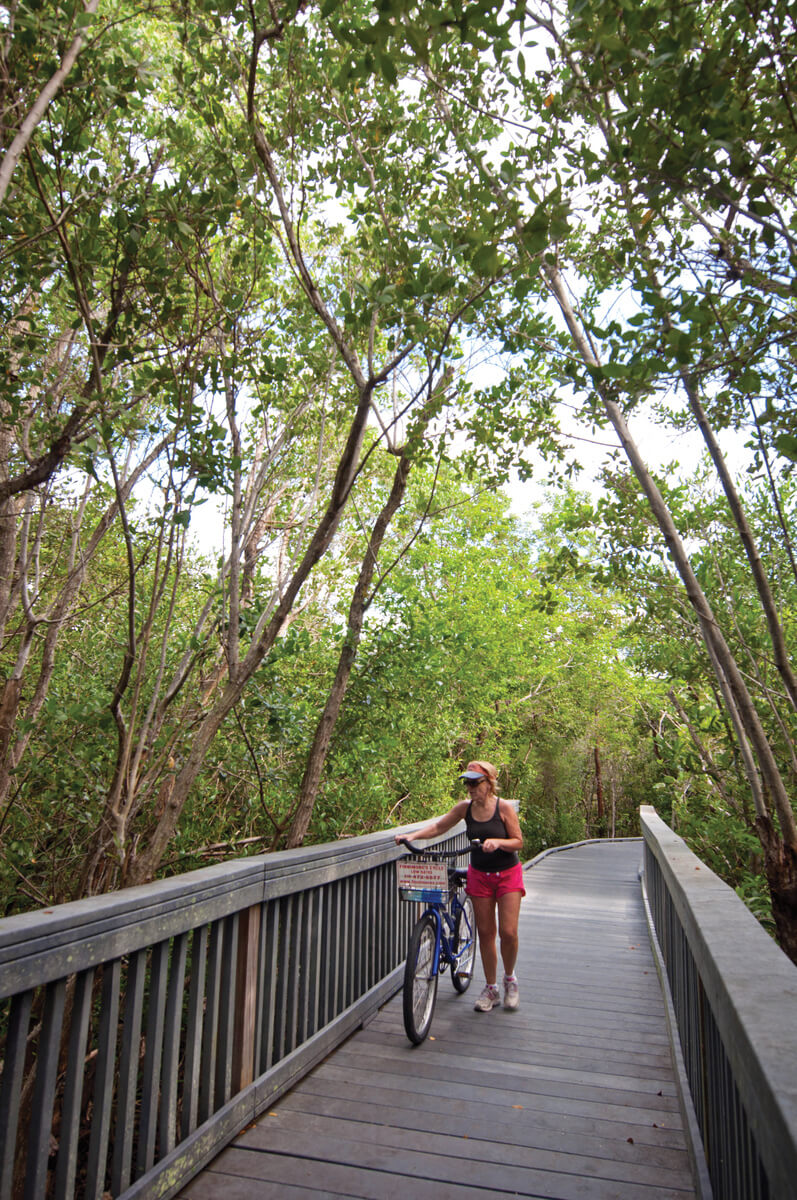
Photo credit Debi Pittman Wilkey
J.N. “Ding” Darling National Wildlife Refuge is also the starting point for other tours including fishing charters, nature cruises, and sealife tours. They can all be arranged through Tarpon Bay Explorers’ office on the Ding Darling Refuge parking lot.
Best Times to Visit J.N. “Ding” Darling on Sanibel
If you’re planning to visit this amazing wildlife refuge on Sanibel Island, you should try to avoid Fridays as the Wildlife Drive is closed to allow for maintenance and to give the wildlife a chance to feed undisturbed for one day a week. Also, keep in mind that Sanibel is a small island with two-lane roads and traffic can get pretty heavy on weekends and holidays. The park opens at 7 a.m. Saturday through Thursday and closing time varies between 5:30 and 8 p.m. depending on the time of year. The Visitor & Education Center is open from 9 a.m. to 5 p.m. January through April and until 4 p.m. May – December and admission is free. You’ll find great interactive wildlife exhibits, a hands-on area for children, free films, lectures, guided tours for nature photography, shelling, birding and/or wildlife, and more.
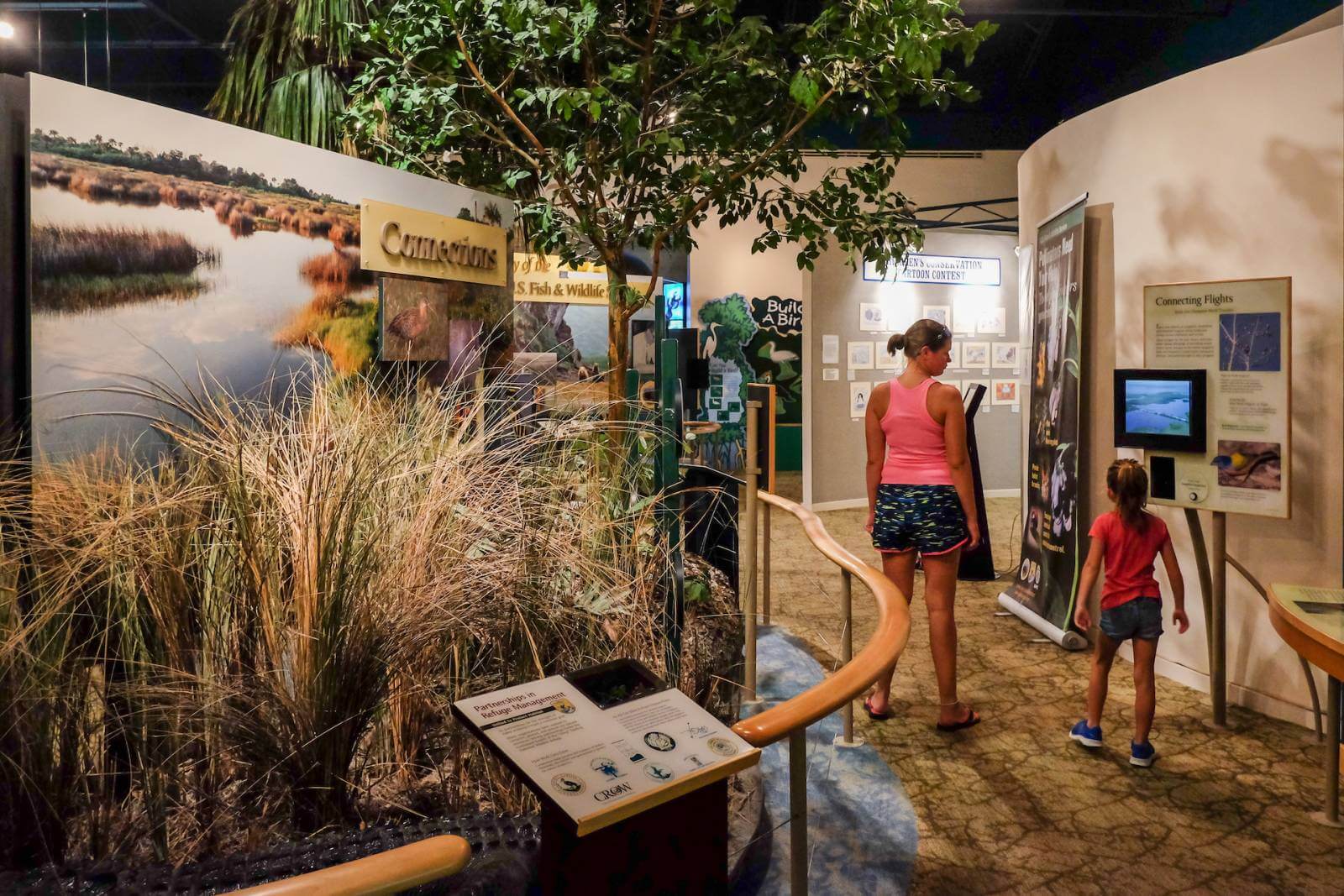
Photo credit Mary Carol Fitzgerald
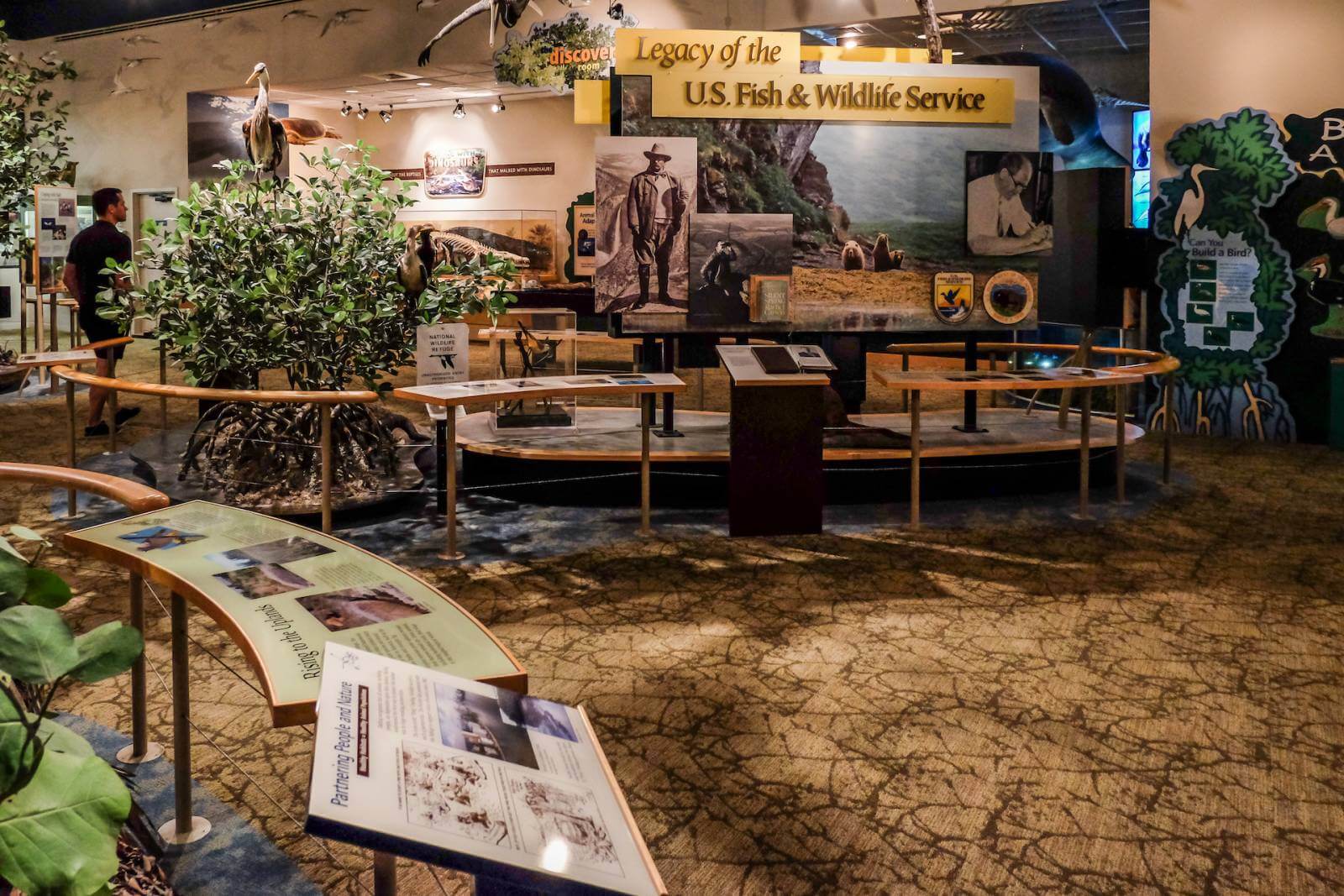
Photo credit Mary Carol Fitzgerald
To ensure maximum wildlife sighting opportunities during your visit, it’s best to plan your visit during low tide, early in the morning or just before sunset.
